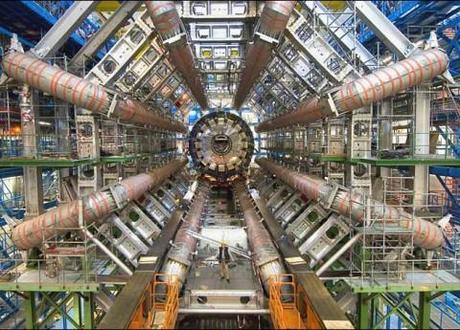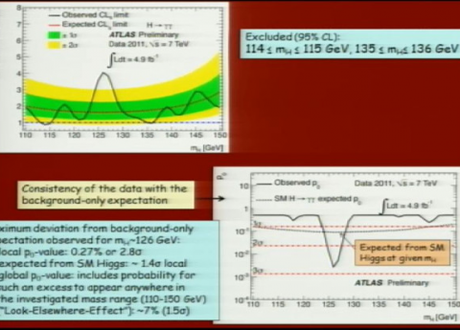 The Large Hadron Collider at Cern Photocredit: Image Editor http://flic.kr/p/47Psud
The Large Hadron Collider at Cern Photocredit: Image Editor http://flic.kr/p/47Psud
The background
For 45 years, scientists have been puzzling over why matter attains mass. It all hinges on the Higgs boson – an elusive particle which boffins have been hunting at the CERN laboratory in Switzerland using the Large Hadron Collider. Now, scientists claim that they have found a particle which is consistent with the Higgs boson, reported the BBC.
Of the two teams after the particle, CMS and Atlas, the first has reached something it calls a discovery; the second hasn’t. The LHC smashes together two beams of protons in the hope that new particles will be revealed. If it is found, it will prove the Standard model of the Universe, and may also lead to scientists being able to explain more complicated matters such as dark matter and dark energy. The Standard Model describes everything that makes up the universe; if the Higgs does not exist, it would mean that the Standard Model doesn’t hold. The particle is thought to give everything in the universe mass; it is too unstable to pin down, so scientists hope to catch it by observing what it decays into.
If this is the Higgs boson, or if it isn’t, this discovery is one more step into our understanding of the universe. At the time of writing, the Guardian live blog quoted a CERN scientist: “Is it a Higgs boson or not? Well, it has been found using techniques tuned for the Standard Model Higgs. A different object might have stepped in, but it is quite unlikely in my humble opinion.”
“The evidence is piling up… everything points in the direction that the Higgs is there,” said Professor Stefan Soldner-Rembold from the University of Manchester on BBC.
What have they discovered?
A “bump” in data which corresponds to a particle that has 125.3 gigaelectronvolts, which is 133 times heavier than a proton, a particle found at the heart of atoms. The scientists’ confidence level is at the “five sigma” point, which is a 1 in 3.5 million chance that the signal would be there if there were no Higgs particle. They are not yet sure if it is the Higgs boson, however.
The science bit
The Higgs boson was first theorised in the 1960s, reported National Geographic, by a physicist – Peter Higgs, to explain why some particles had mass and others didn’t. Photons, for instance, don’t have mass, whereas protons and electrons do. He thought that the universe had an “invisible field” which every particle feels; if a particle moves through it “with little or no interaction”, then that particle “will have little or no mass.” But if it does interact with the field, then it will have mass. The field requires a particle – the Higgs boson.
What’s a boson?
It’s difficult for most people to understand, said Amit Chaudhuri in The Guardian, which is why scientists locate it “in personalities as well as cultural and national traditions.” So we cling to the notion that Peter Higgs found it (ignoring Philip Anderson’s contribution), and ignore the wordy bits. But what is a boson? It, along with fermions, are “two fundamental classes of subatomic particles.” Fermions were discovered by Enrico Fermi; Bosons by Satyendra Nath Bose, an Indian physicist. They are the particles that carry force.
Particle physics has entered popular culture
High energy particle physics has certainly found its way into pop culture, said Robert Mackey in The New York Times – CERN was “the source of the antimatter that was going to blow up the Vatican” in Angels and Demons; then a lawsuit said it would make a “black hole that would swallow the earth.” There’s even a “Large Hadron Rap.” Still, at least if it’s discovered, it would “disprove one of the loopier theories” – that “the boson didn’t want to be found and could reach back into the bast … to prevent itself from being discovered.”
The announcement caused some amusement, as it was given in Comic Sans:


